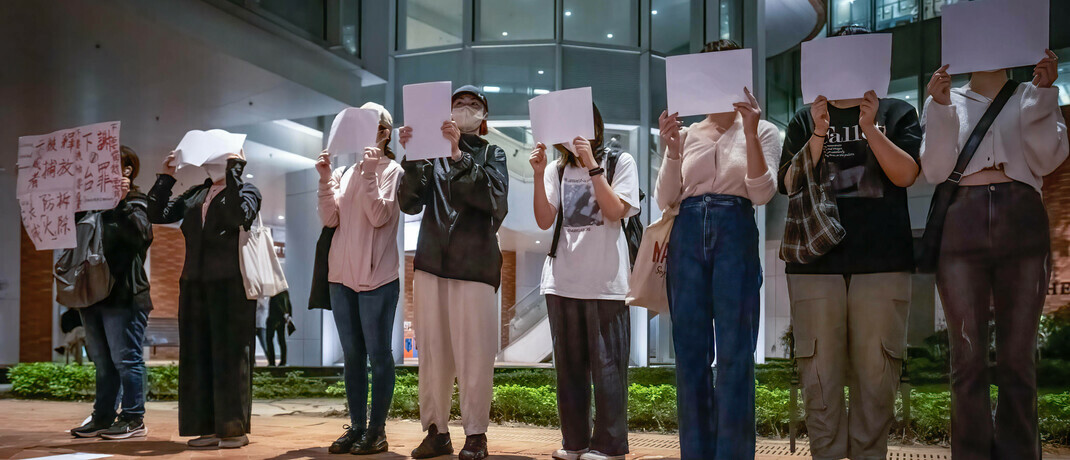(Opinion) Could a blank piece of paper held high over a demonstrator’s head say more than a picture or a thousand words?
Ask the Chinese protestor who is quite sensibly and guardedly likely to tell you that “you can’t censor people if they don’t say anything”. That’s an enormously powerful and nuanced statement; the blank paper is a signal symbol.
Think, if you will, of all the powerful, memorable, historical, poetic, and unforgettable words and images that have filled history’s blank pages and brought them to life, often creating enormous changes in culture and society.

If words are a singularly powerful force, perhaps the expectation of them has similar or even greater weight.
Invented in China around ad 105, a blank piece of paper has been the material of revolutionary proclamations since the dawn of the Christian era.
Not necessarily the popular A4 size whose contemporary ubiquity has been brilliantly lifted by Chinese political activists to provide the hashtag “A4Revolution,” which recently trended on Twitter and fueled demonstrations against the Chinese government’s zero-Covid policy and its draconian restrictions on freedom of movement, press, and speech.
Estimated to have affected more people than the entire US population, lockdowns have created temporary ghost towns of previously vibrant urban centers, their populations lifted from everyday life and restricted to their residences for long periods of time, their access to food and other necessities minimal.
The A4Revolution is an understandable pushback to the degree the Chinese can get away with any pushback without inviting police interference.
We know that it has never been safe nor easy to defy repressive regimes, political or religious. No small number of the writings of reformers have led to their authors being burned at stake or otherwise severely punished for their efforts.
In 1517, beginning with blank pieces of paper, Martin Luther, a small-town monk, wrote 95 Theses and famously nailed them to the door of the castle church in Wittenberg, Saxony.
Luther’s seemingly mild act of resistance to what he saw as Catholic church corruption is credited with “lighting the flame of the Reformation” which ultimately ruptured relations between Catholic and Protestant churches.
Luther’s rebellion might have gone largely unheralded were it not for the invention of the printing press seven decades earlier by a fellow German, goldsmith Johann Gutenberg. Its use spread rapidly.
Even in that short span of time since the press’ invention, Luther’s attacks on the church were recognized as hot commercial property, top of the best-seller lists of the day, and printers produced and sold as many copies as they could.
Think of the writings of American revolutionaries Samuel Adams, Tom Paine, and Thomas Jefferson and, more recently, of the impact of the writings of Carl Marks, Mao Zedong, and Hitler, each of whom faced that blank piece of paper and used it to try and change the world.
One wonders what the mostly young Chinese protestors would write or draw on their A4 sheets if that were possible.
Instead, going back in time, they are letting the world and their fellow protestors recognize a story that cries out to be written, a story of a repressed people giving a silent voice to the fight for their freedom and rights.

